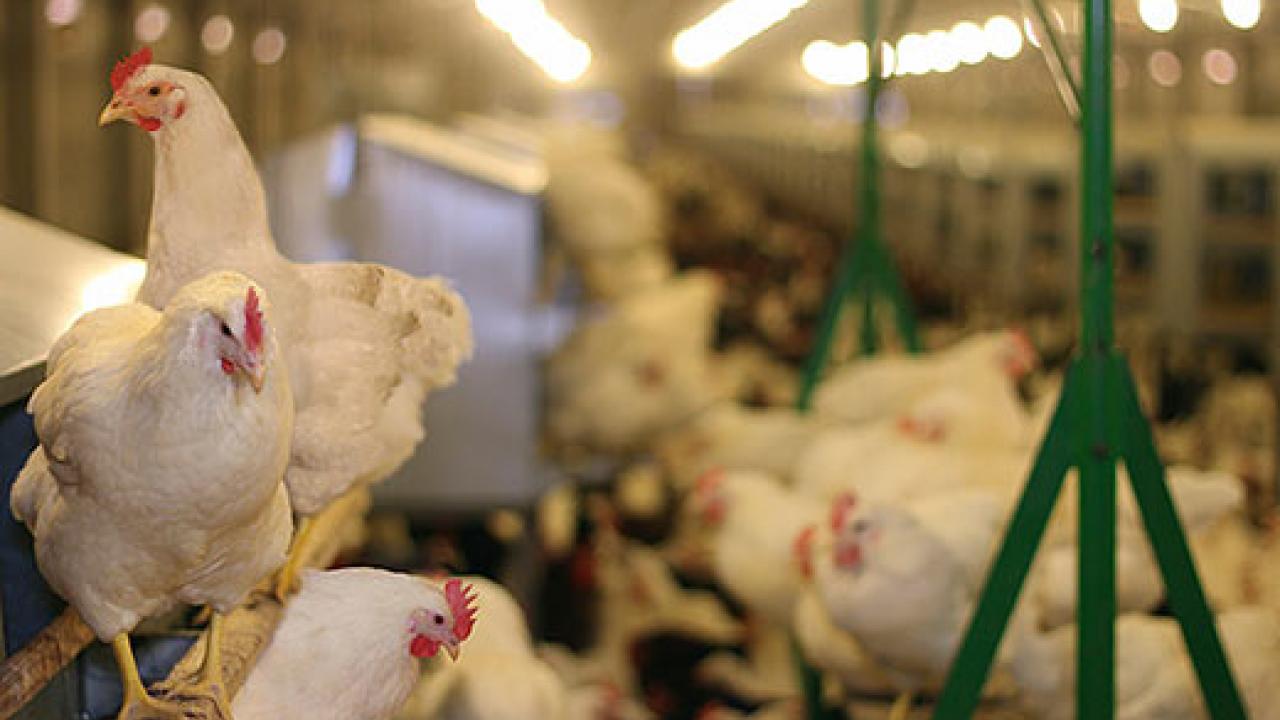Alternative housing systems for laying hens present a variety of tradeoffs, according to new UC Davis research. The findings shed light on how hen housing affects the 75 billion eggs produced in America each year, providing data on the cost, safety, animal welfare, worker health and environmental impacts of various hen-housing systems.
“There are positive and negative impacts with each of the three housing systems we studied,” said Professor Joy Mench, a poultry welfare expert and vice chair of the Department of Animal Science. “As egg producers move away from conventional cage systems, we hope this data will help consumers, regulators, producers and others weigh the tradeoffs and benefits of alternate methods.”
California banned eggs from chickens that don’t have enough room to turn around or flap their wings. Other states are considering similar laws. A multistakeholder consortium called Coalition for Sustainable Egg Supply funded this first-ever commercial-scale study to evaluate the sustainability of three types of hen housing: traditional wire cages; “enriched colonies,” or enclosures, that offer more space, perches and nesting boxes; and a cage-free house where chickens can move relatively freely within an enclosed barn.
UC Davis researchers, working with colleagues from Michigan State University, Iowa State University, and USDA Agricultural Research Service, spent three years analyzing hen housing on a farm in the Midwest, measuring environmental impacts, hen health and welfare, and egg quality and safety. Their findings provide an interesting snapshot of how hen housing affects egg production, such as:
- Chickens in cage-free houses had stronger bones because their housing allowed for the widest range of movement. And yet, cage-free hen mortality rate was more than double that of hens in the other houses. Most cage-free chickens died from disease, but some were killed by other chickens in the barn.
- Hens in enriched colonies were also able to move around a fair amount (they could perch, nest and stretch their wings), and they exhibited the best health overall. In general, hens in all the houses were in good physical and physiological condition without signs of long- or short-term stress.
- The cage-free system produced the most costly eggs, exceeding traditional egg-production costs by 30 to 40 percent. Labor and capital costs were higher for enriched colonies than traditional cages, but feed costs were similar. Feed accounts for more than half of egg-production costs.
- Air in the cage-free housing was full of dust, but it didn’t seem to harm the hens. The dust did, though, expose workers in cage-free housing to higher levels of pollutants. Researchers said workers in all types of hen housing should wear masks or some other kind of respiratory protection.
- Greenhouse gas emissions were low for all three housing types.
Egg producers and animal welfare advocates applaud the study for providing a more holistic look at egg-production sustainability.
“When animals are involved, evaluating their welfare is a crucial aspect of any production system,” said Marion Garcia, chief veterinary officer and director of the Animal Welfare Research Institute, American Humane Association. “But to truly achieve sustainability, a variety of other factors such as the environment, the health and safety of the workers, food safety and quality, and affordability of what’s produced should also be considered, effectively evaluating the entire system.”
UC Davis researchers provided leadership in nearly all areas of the study, including animal welfare, worker health and safety, food affordability, and the environment.
“That really speaks to the diversity of expertise we have here at UC Davis,” Mench said. “We face many challenges with food production, animal welfare and sustainability. Science-based, public/private partnerships like these will help us make informed decisions.”
More information about the research results. An enriched colony system can be viewed in action via a live stream, video camera at JS West and Companies, a poultry farm based in Modesto, California.
Media Resources
Pat Bailey, Research news (emphasis: agricultural and nutritional sciences, and veterinary medicine), 530-219-9640, pjbailey@ucdavis.edu
Joy Mench, Animal Science, (530) 752-7152, jamench@ucdavis.edu
Diane Nelson, College of Agricultural and Environmental Sciences, 530-752-1969, denelson@ucdavis.edu
